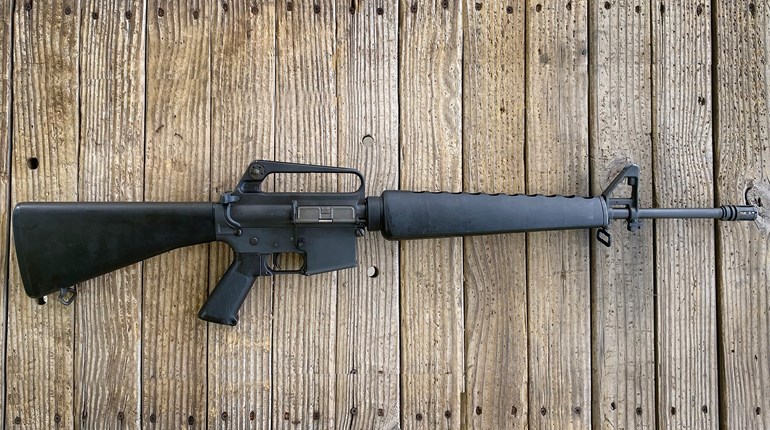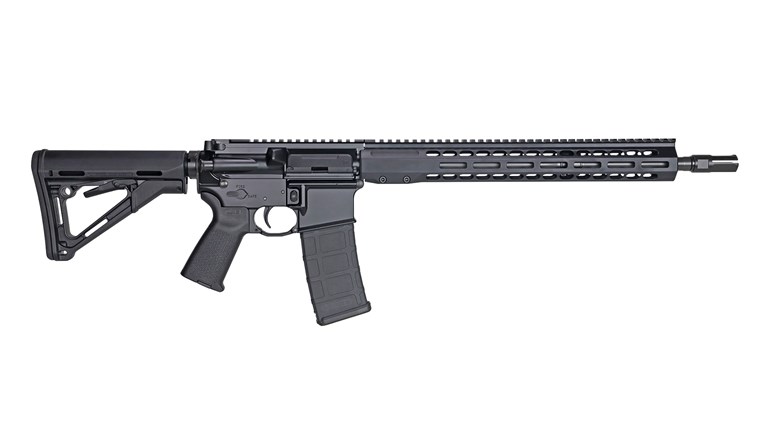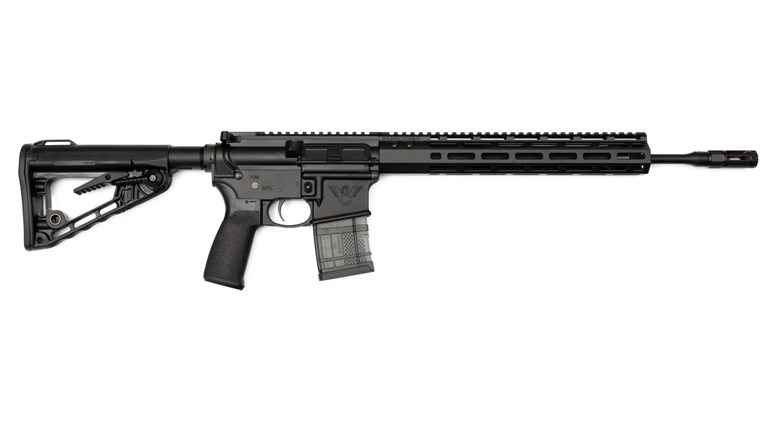
So, 5.56 NATO and .223 Remington. Two cartridges, identical exterior dimensions, yet the chain of events that occurs once the trigger is pulled makes the two rounds as different as oil and water. Yes, to the naked eye, there is no difference; even to the trained eye, without inspecting the headstamp to verify, I seriously doubt whether anyone could differentiate between the two cartridges unless there was a signature projectile on top. So, what do you need to know regarding 5.56 NATO vs. .223 Remington to be safe and optimize performance from your rifle? Let’s take a look.
Comparing 5.56 NATO vs .223 Remington
The simplest, yet most important, difference between the two cartridges is their respective pressure limits. The .223 Remington cartridge is held to a lower pressure than 5.56 NATO. Some of the testing methods to determine these actual pressures can be confusing, as both cartridges have been tested by the ballistic authorities (read CIP and SAAMI) in the same 5.56 mm chamber, and the resulting data will appear to be nearly equal. The dimensional variation in the distance between the case mouth and the beginning of the rifling is called the leade. Trying trying to fire 5.56 NATO ammunition in a .223 Remington chamber with a shorter leade is just a bad idea. The shorter leade will cause internal pressures to spike to dangerous levels.

The reverse is not true. It is, and always will be, safe to shoot .223 Remington ammunition in a chamber marked for 5.56 NATO. Commit that idea to memory, and you’ll never get in trouble. The pressures that a 5.56 NATO cartridge can generate are too high for the .223 Remington chamber, and that is based primarily on the leade dimensions. If you feel that the ability to shoot 5.56 NATO ammunition out of your .223 Reminton chambered rifle is paramount, take that rifle to a competent gunsmith to have the chamber reamed out to handle 5.56 NATO ammunition.
5.56 vs .223: Long Leades And Short Leades
That chamber dimension for the 5.56 NATO is, in fact, slightly larger than the chamber for the .223 Remington—in order to have the smoothest feeding and ejection, even with a dirty weapon, to best serve as a battlefield implement—but it is the leade dimension that makes the biggest difference. Leade is defined as the area from the bullet's resting place before firing to the point where the rifling is engaged. The shorter the leade dimension, the faster the bullet will engage the rifling, and the faster the pressures can rise to a dangerous level.
By design, a 5.56 NATO chamber has almost twice the leade that a .223 Remington chamber does. This is why a long leade cartridge fired in a shorter leade chamber result in a fast and dangerous pressure spike. Again, firing lower pressure .223 ammo in a 5.56 specific rifle is no issue, but firing higher pressure 5.56 NATO ammo from a .223 Remington chamber is extremely dangerous.
Looking at the actual case dimensions, there will be no discernible differences, even when looking at the SAAMI specifications, or for the dimensions of the reloading dies for the pair of cartridges. Yet, there are subtle differences. Initially, the first dimension that will be different is the wall thickness of the brass. As is the case with most military cartridges, the military NATO case will tend to have thicker walls, resulting in less case capacity, and a correlatively higher pressure given the same powder charge. If the exterior dimensions are identical, a thicker wall dimension must result in a smaller interior volume. That can and will pose a problem for those who reload their ammunition; I highly recommend segregating the cases and treating them differently.

5.56 NATO vs .223 Remington: War vs Sport
Secondly, the 5.56 NATO was bred for war, while the .223 Remington was released to the civilian population. The two must be looked at in the same manner as the 7x57 Mauser or .257 Roberts; the ammunition designed for the older rifles is of lower pressure limits, yet there is a +P, or higher pressure limit too. It is easy to think of .223 ammunition as the lower pressure version, and the 5.56 NATO as the +P version. Though the pressure is higher for the 5.56 NATO, the U.S. military gave it a chamber that would allow for a bit of slop, if you will, to ensure that it would operate in the worst conditions. Therefore loading this ammunition in tighter chambers can prove disastrous.
I’ve found that firing .223 ammunition from a 5.56 NATO chamber will can generally result in a slight accuracy degradation. But certain rifles have proven to be exceptions to this rule. I personally attribute the larger group sizes to the larger leade and corresponding bullet jump. Barrels and chambers are funny like that; some are drastically affected and others are not. The difference in freebore length which usually 0.0566 inch for the NATO and 0.025 inch for the Remington has much the same effect as radically changing the bullet seating depth in handloaded ammunition: pressures change.

5.56 NATO vs .223 Remington: Bolt vs Semi
For those who are bolt-action rifle shooters, there is no problem firing commercial .223 ammunition from a 5.56 NATO chamber. That said, AR-15 shooters may find that some rifles are set up to perform with the higher recoil level and pressure levels of the hotter 5.56 ammo. I have seen instances where ARs designed to handle 5.56 with heavier springs won’t reliably extract and feed .223 Remington cartridges, as these will simply not produce enough pressure to reliably cycle the action.
I wish the powers that were had decided on one universal design, so as to avoid the confusion that has developed from having two names and power levels for the same cartridge. If you already own one or the other, please take note of this information. If you’re shopping for a rifle chambered for one of these cartridges, may this enlighten you before you make your purchase. In conclusion, comparing the 5.56 NATO vs .223 Remington, it is safe to say that both are sound designs. However, they are just not directly interchangeable. Forewarned is forearmed, so make your decision accordingly.






































